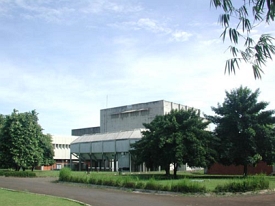
The Indonesian Low-Speed Tunnel (ILST)
In late May, a team of NLR specialists concluded the final on-site integration tests of the upgrade of the Data Acquisition and Data Processing systems of the Indonesian Low Speed Tunnel (ILST) in Serpong, Indonesia. The work has been finalized by the customer with the successful execution of a number of wind tunnel measurements on a reference aircraft model.
The ILST is an Indonesian low-speed wind tunnel, of which the construction completed in 1988 under the auspices of NLR, as a result of a partnership between the Indonesian and Dutch government. The ILST is located in the industrial park PUSPIPTEK in Serpong, west of the capital Jakarta. Besides coordinating the preparation, construction and delivery of the wind tunnel, NLR at the time also developed and delivered a large number of hardware systems. Three of these systems have recently been modernized in cooperation with LAGG (the managing division of the ILST). These are the Data Acquisition & Reduction System (DARS), the Calibration System (CS) and the Data Processing System (DPS).
Major reason for the modernization of these systems is that the mainframe computers, which have been in use for a quarter century, are outdated. The mainframes have been replaced by modern and robust personal computers. The opportunity is also used to modernize much of the data acquisition equipment and extend it with new functionality.
In addition to the replacement and update of the hardware, also the system software has been overhauled. In particular, the DARS and CS software are completely redesigned, based on the use of special software for wind tunnel applications dubbed DRACHME (Distributed Real-time Automation and Control Host Multi-platform Executive), which has been developed earlier by NLR. A part of the software development is carried out by the customer. This included the development of the required Graphical User Interfaces, which are used for the control of the system and for the visualization (numerical and graphical) of measurement data.
Also visit our Avionics Development and Qualification capability page.


